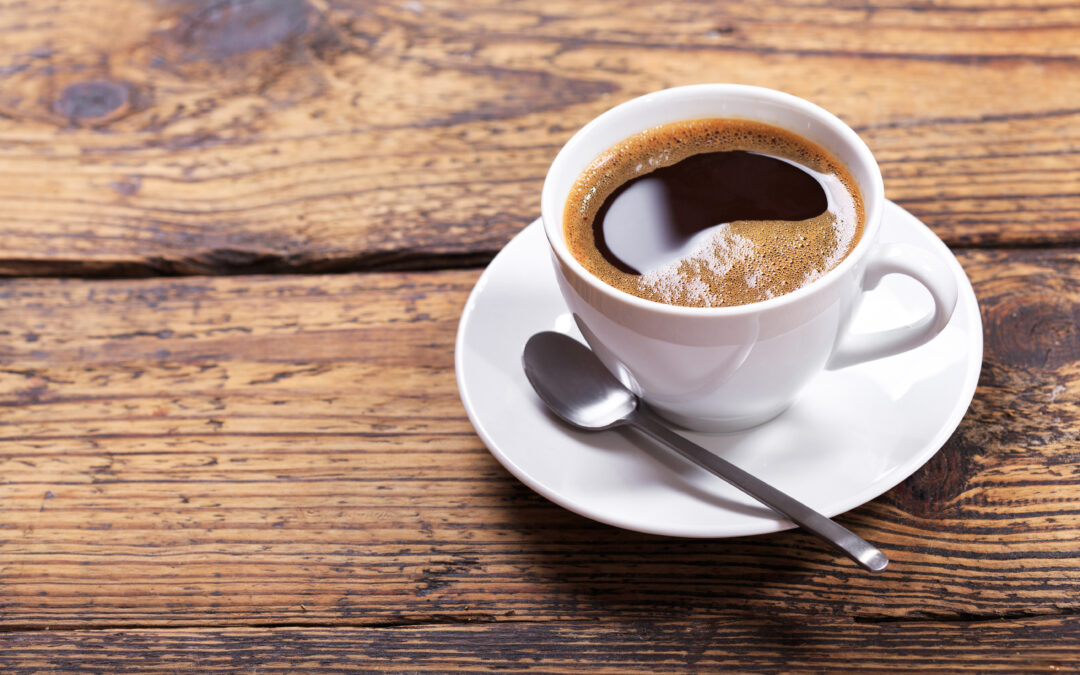Yes, you can enjoy that Cup of Joe when you’re over 50, and you can boost your health and gain energizing benefits, too. That Cup of Joe can enhance energy levels, boost your health and your mood and provides some protection against diabetes, cardiovascular disease, and dementia. Plus, that warming delicious Cup of Joe can add to your longevity. Wow!
As a coffee drinker over 50, I’m delighted, but there are some adjustments to be made. Read on because you may want to make some adjustments, too.
These health-boosting benefits are a result of the bioactive compounds, some of which can be even more beneficial for us over 50.
In that Cup of Joe, one of its main ingredients, caffeine, is full of bioactive compounds. And after roasting, where its chemical composition changes, these health boosts become even more potent as they explode in flavor.
You may be surprised to learn that there are more bioactive compounds in expresso than in red wine or green tea. And because we drink a good bit of it, coffee is the leading source of antioxidants in the American diet.
Wrapping Up in a Blanket of Antioxidants with a Cup of Joe
 What’s outstanding about these bioactive compounds, or polyphenolic antioxidants, is that they have a great capacity to chomp away at inflammation.
What’s outstanding about these bioactive compounds, or polyphenolic antioxidants, is that they have a great capacity to chomp away at inflammation.
Inflammation occurs when your body sends out the cavalry (your immune system) to fight bacteria or to heal damaged tissue except, you might not be sick nor damaged. When there’s no danger and your immune system works overtime, it creates low level chronic inflammation.
We know that chronic low levels of inflammation lead to many of the conditions and diseases maturing adults experience. That makes chronic inflammation something we want to work hard on to keep it at a minimum, particularly when we’re over 50.
Antioxidants fight inflammation by protecting and keeping our cells healthy. One antioxidant almost exclusively found in coffee that boosts our health is chlorogenic acid. This compound is thought to reduce the risk of cardiovascular disease. Very cool.
Wondering how much of these polyphenolic antioxidants actually land in your cup? And since the most recognized bioactive constituent of coffee is caffeine, wondering how much caffeine is in a cup?
Well, an 8-ounce cup of coffee generally contains about 200 mg to 500 mg per cup of polyphenolic antioxidants, and 95 mgs of caffeine.
The amounts, however, can vary depending on a number of factors:
- Types of coffee beans. There’s a wide variety that varies in amounts contained.
- How the coffee is roasted with lighter roasts having more health-boosting compounds than darker roasts.
- How the coffee is made has a big impact on amount – brewed, pressed or poured over.
- Instant or decaf has an average of 3mg of caffeine that still remains after processing.
- And of course, your serving size of that Cup of Joe is an influencer, too.
Whatever the amount of health-boosting compounds, all that goodness lands in your Cup of Joe.
More Health-Boosting Benefits When You’re Over 50
 Research study has shown a link between drinking coffee and a reduced mortality risk. It turns out that this protective element is even stronger for us over 45 years old.
Research study has shown a link between drinking coffee and a reduced mortality risk. It turns out that this protective element is even stronger for us over 45 years old.
People over the age of 45 and who drank 4 or more 8 oz cups of coffee a day had a reduced mortality risk by 64%. Because we don’t drink that much in the United States, drinking 2-8oz cups of coffee a day had a 22-30% lower risk of death over a 10-year period.
Coffee also contains magnesium. Magnesium has many duties. One of them is helping to manage blood sugar levels. It’s the combination of antioxidants and magnesium that’s thought to lower the risk of Type 2 Diabetes.
Caffeine has been shown to prevent or delay dementia for older adults. Even one Cup of Joe per week can decrease the risk of stroke and heart failure.
Caffeine lowers cholesterol. Since cholesterol is so worrisome and the statement so curious, let’s take a deeper dive. Stay with me here.
PCSK9 inhibitors is a class of drugs that lower the LDL, or the bad cholesterol. When we say bad, we’re referring to the small particle LDLs.
Well, guess what lowers PCSK9 levels—coffee, that very Cup of Joe you have your hands wrapped around, mid-morning, of course. Keep reading to find out when to drink that health-boosting Cup of Joe.
It’s the good ole’ caffeine that helps increase the efficiency of the liver to recycle those pesky LDL particles before they become small and start clogging arteries. The more time LDL stays in the blood stream, the more potential for them to become small.
In fact, researchers are developing new caffeine derivatives as potential therapies for cardiovascular disease.
Speaking of the liver…Coffee is metabolized differently in different people. It’s a genetic thing that seems to control the cocktail of enzymes in the liver that knocks out the caffeine quickly or slowly.
You’ll be able to tell if you’re a slow or fast metabolizer if your 11am cup of coffee still has you wired at 4pm. You could safely guess that your cocktail of enzymes are probably on the slower side of metabolizing the caffeine.
Enjoy that Cup of Joe, But Not First Thing in The Morning
 You wake up in the morning, it’s tempting to reach for that warm and comforting cup of coffee, but don’t. It’s better to wait about 45 minutes to an hour before you reach for your morning brew.
You wake up in the morning, it’s tempting to reach for that warm and comforting cup of coffee, but don’t. It’s better to wait about 45 minutes to an hour before you reach for your morning brew.
This is, however, the perfect time to hydrate with water instead. Adding some lemon or electrolyte to your water for a bit of detoxing is a grand idea and a great habit to add to the basal ganglia.
But don’t do coffee first thing. Because when you wake up, cortisol is swirling through your veins. In fact, cortisol the hormone that helps get you up.
Drinking your morning Cup of Joe first thing can interfere with the production of cortisol. The body thinks that your blend is doing an equal or better job than cortisol was doing. Cortisol production will slow, messing with your circadian rhythm and the possibility of hypertension rearing up.
If you’re in absolute need of coffee in the morning and can’t get up without it, more than likely, your circadian rhythm cycle has been altered. You need caffeine where there used to be hormones.
So take a break from coffee for a bit until things settle down.
When you get back to having coffee, drink your Cup of Joe about 45 minutes to 1 hour after you wake up. That’s about how long it takes cortisol to settle down.
 How You Make Your Coffee Matters
How You Make Your Coffee Matters
To gain more of those health boosting benefits of coffee, how you make your Cup of Joe matters.
While caffeine lowers PCSK9 levels helping us to recycle small particle LDLs, cafestol, a molecule in coffee, reduces the body’s ability to regulate cholesterol levels. Cafestol is one of the most powerful elevators of LDL.
Here’s the good news, and a cool little trick. It’s all about how you make your Cup of Joe.
By using a pour over method with a paper filter or a coffee sock filter, you can remove most all of the cafestol in coffee.
All That for Naught if You Remain a Couch Potato
You would think that coffee, as a performance enhancer would get couch potatoes a-jumpin’, but sadly that doesn’t seem to be the case. Research shows that caffeine did little to modify their performance capacity.
Starting small and slowing revving up, you’ll be able to take advantage of that energizing boost of coffee. Here’s a way you can do that…
And, caffeine 30 minutes before your workout will increase fat oxidation!
Get Your Boost for health
 Our 5 Steps to Boost Your Health and Your Productivity include strategies and tips on the top concerns of men and women cresting middle age and beyond. It also includes practical easy-to-do solutions that fit into those busy schedules so you can improve your health and fitness.
Our 5 Steps to Boost Your Health and Your Productivity include strategies and tips on the top concerns of men and women cresting middle age and beyond. It also includes practical easy-to-do solutions that fit into those busy schedules so you can improve your health and fitness.
